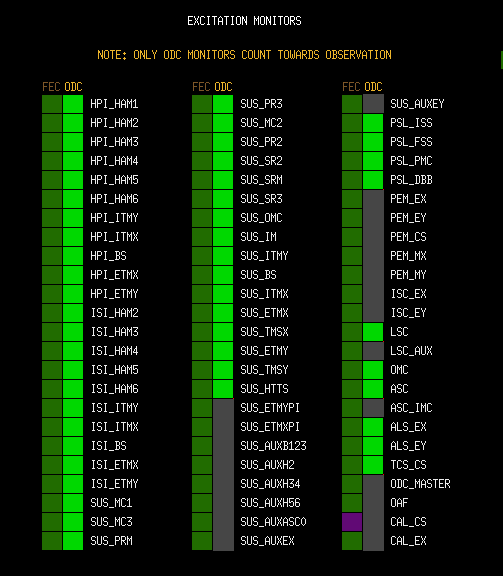Evan, Sheila
While the IFO was down for some calibration measurements, we made another attempt at phasing AS36.
We first redid the dark offsets, this was an important step. Then we locked the bright michelson with 22 Watts of input power.
We steered the beam onto each quadrant of AS_A by maximizing the DC counts, then phased 36 to minimize Q. There were several things that made this seem much more promising than any of our previous attempts to phase these WFS:
-
The amplitudes of the signals in all quadrants were similar to within 5%
-
The phases are all within 20 degrees of each other, as you would expect since the cable lengths are supposed to be matched.
-
The phase that minimized Q also maximized I.
-
The phasing was not very sensitive to the pointing onto the diode, as it is with DRMI locked.
-
When we turned on the centering, the phase required to minimize Q changed by 40 degrees, but the change was the same for all quadrants, and the signal levels were still similar on all 4 quadrants.
Both of these things are firsts for these WFS as far as I'm aware, so this seemed like real progress.
We started to do the same procedure for AS_B 36, but after we phased the first quadrant the phase jumped. Kiwamu was in the rack working on the calibration measurements of the DC PDs at this time and reported that he had plugged a signal into the patch panel. After this I looked at the A signals again, and they did not make sense any more. I tried repeating the procedure above for A, and found that the phases needed to minimize Q with the light maximized on each quadrant had changed by -15, -10, 0, and -20 degrees for quadrants 1,2,3,4.
It seems like we need to make a thorough check of the HAM6 racks before we continue trying to make sense of AS WFS.
Just for the record the momentarily sane phasings were:
|
segment |
phase (degrees) |
|
1 |
-155 |
|
2 |
-175 |
|
3 |
-165 |
|
4 |
-158 |















